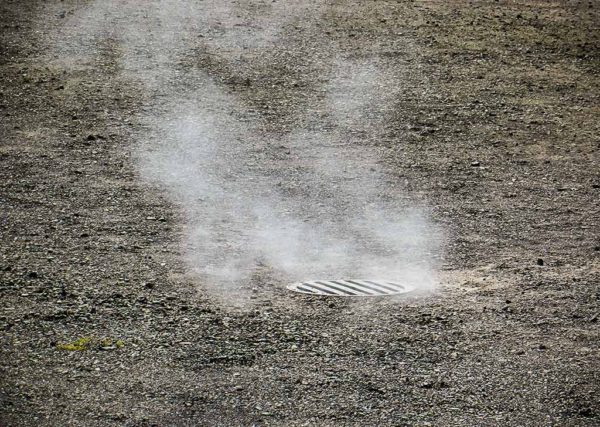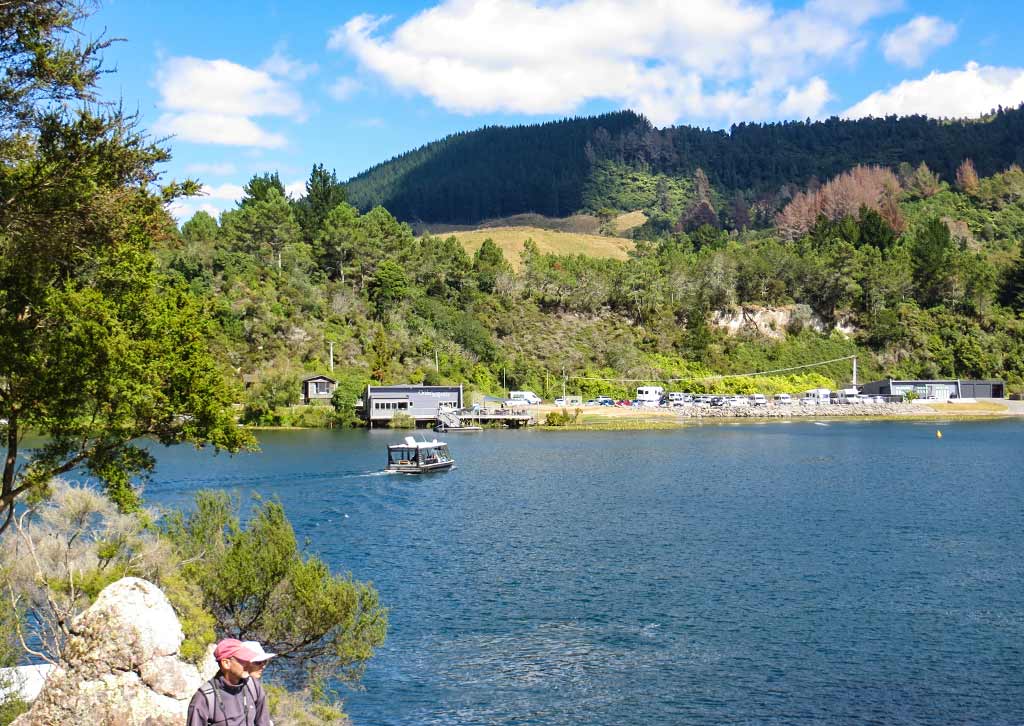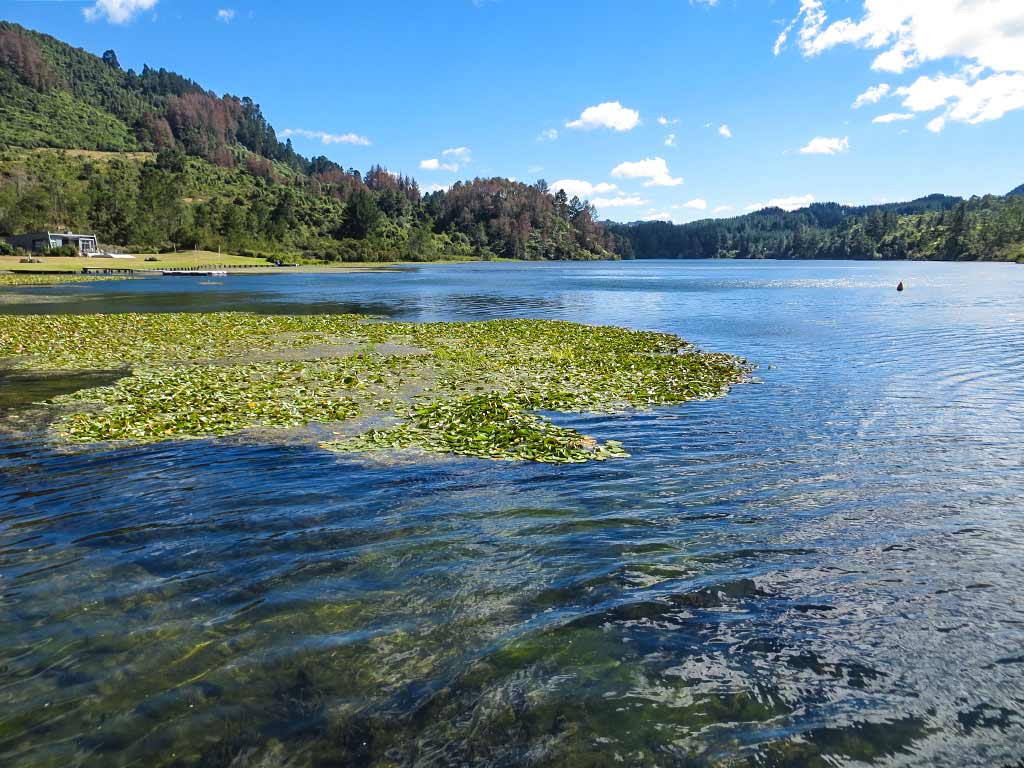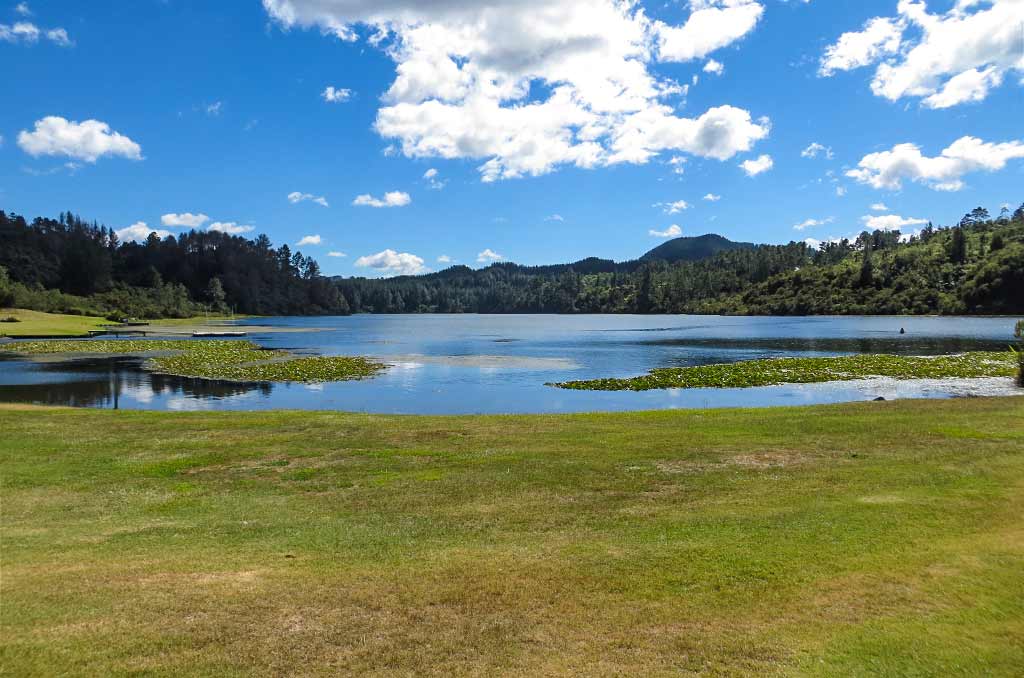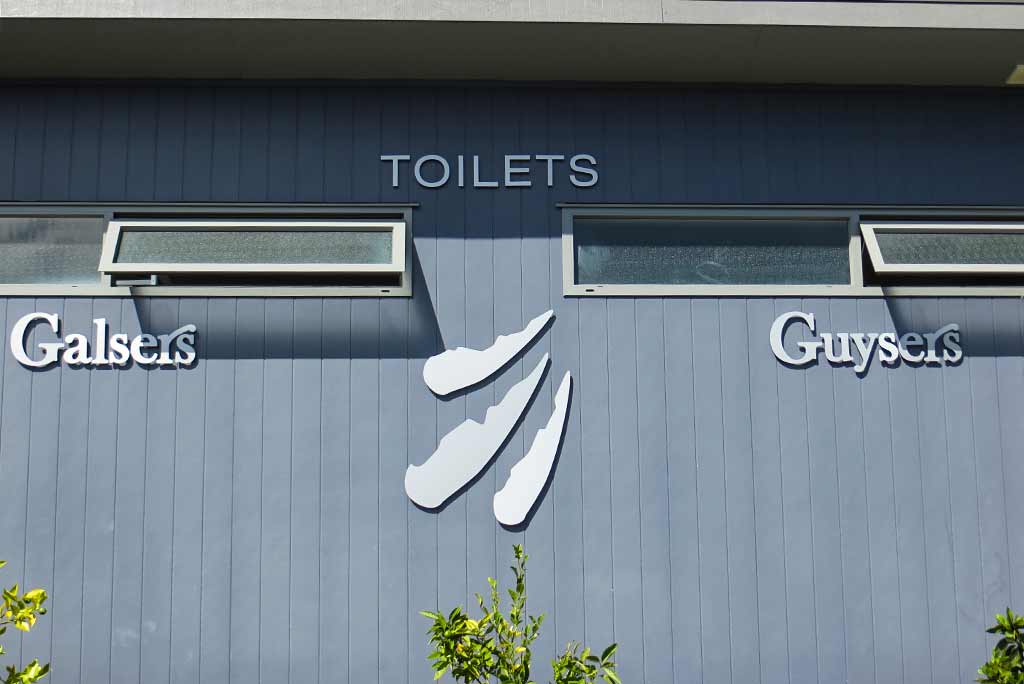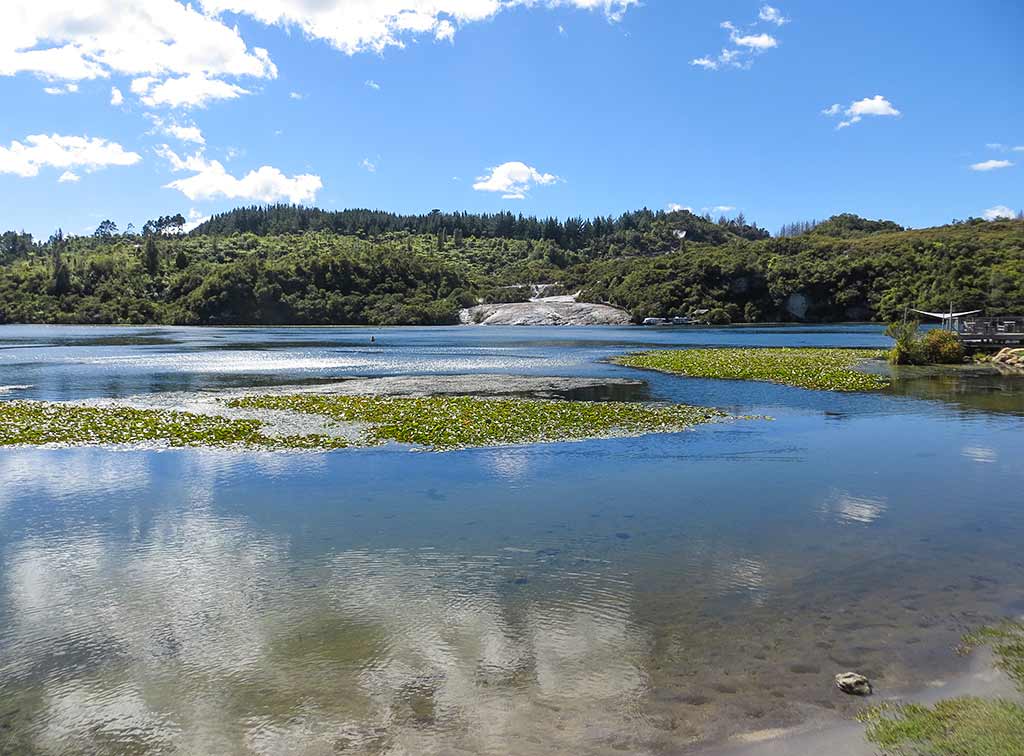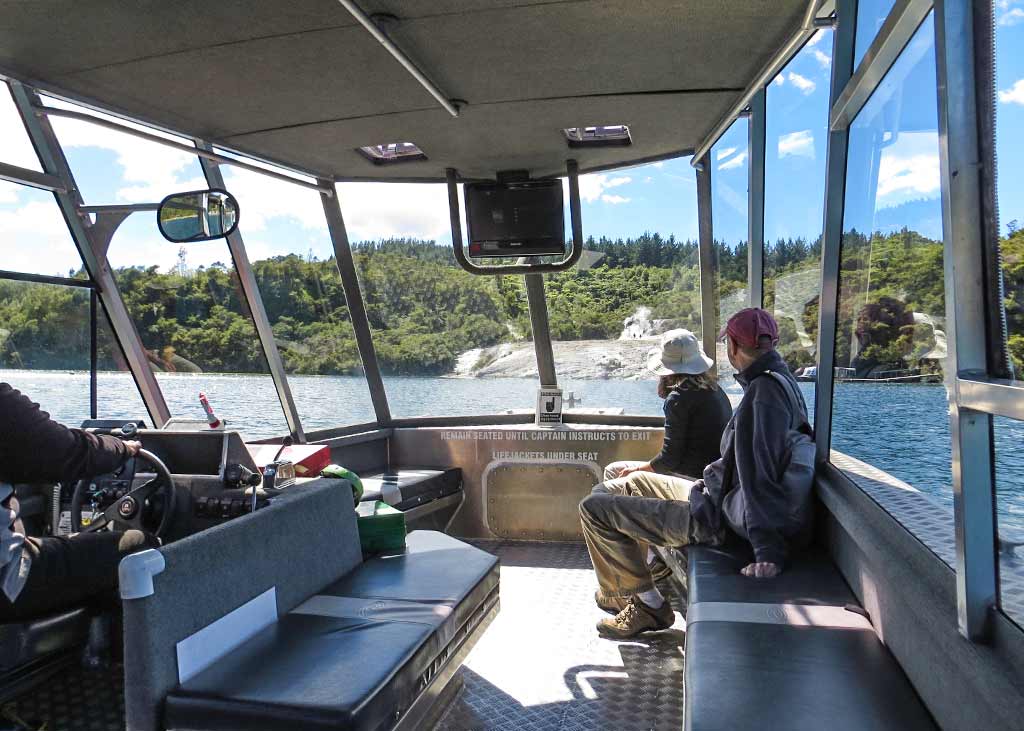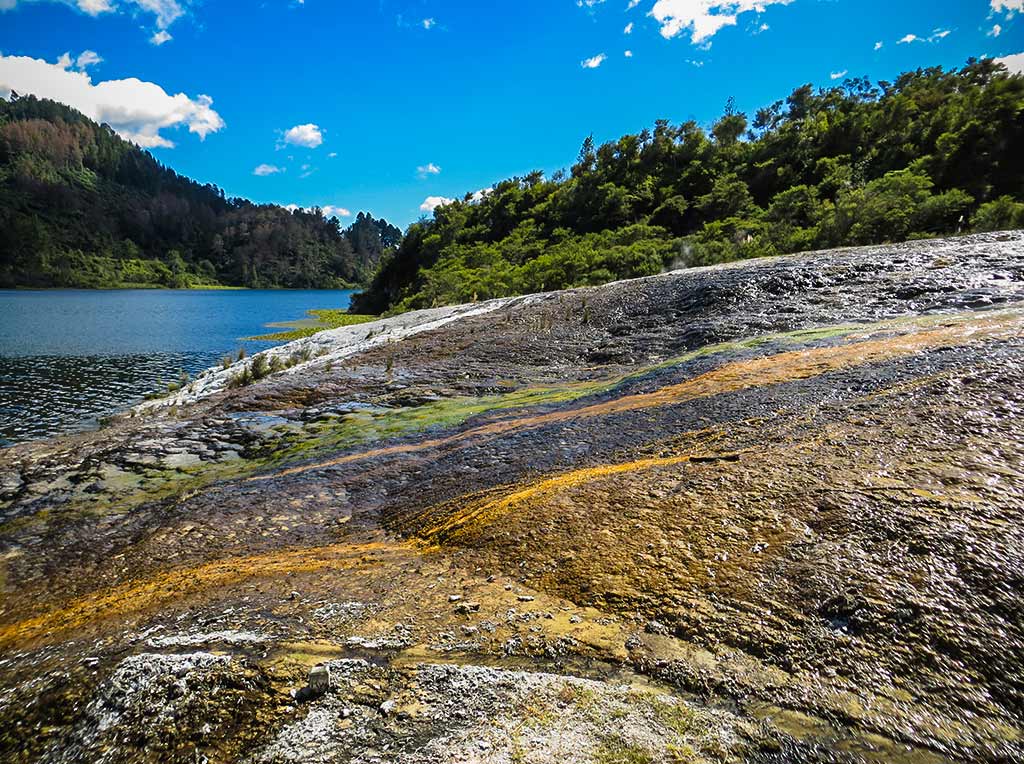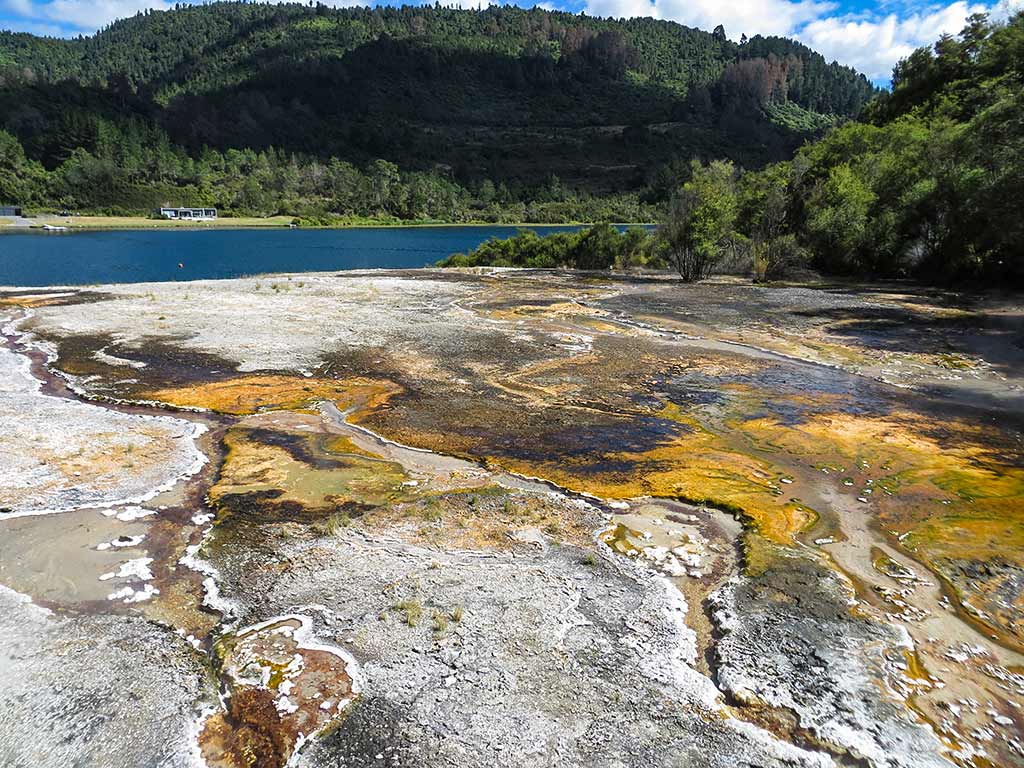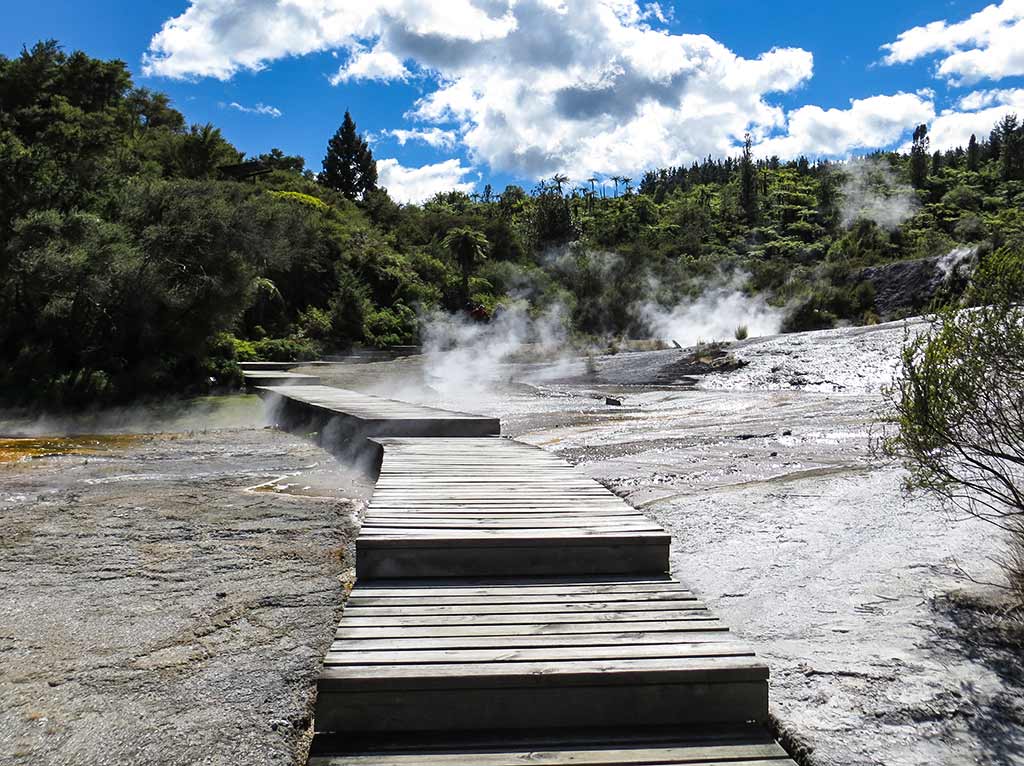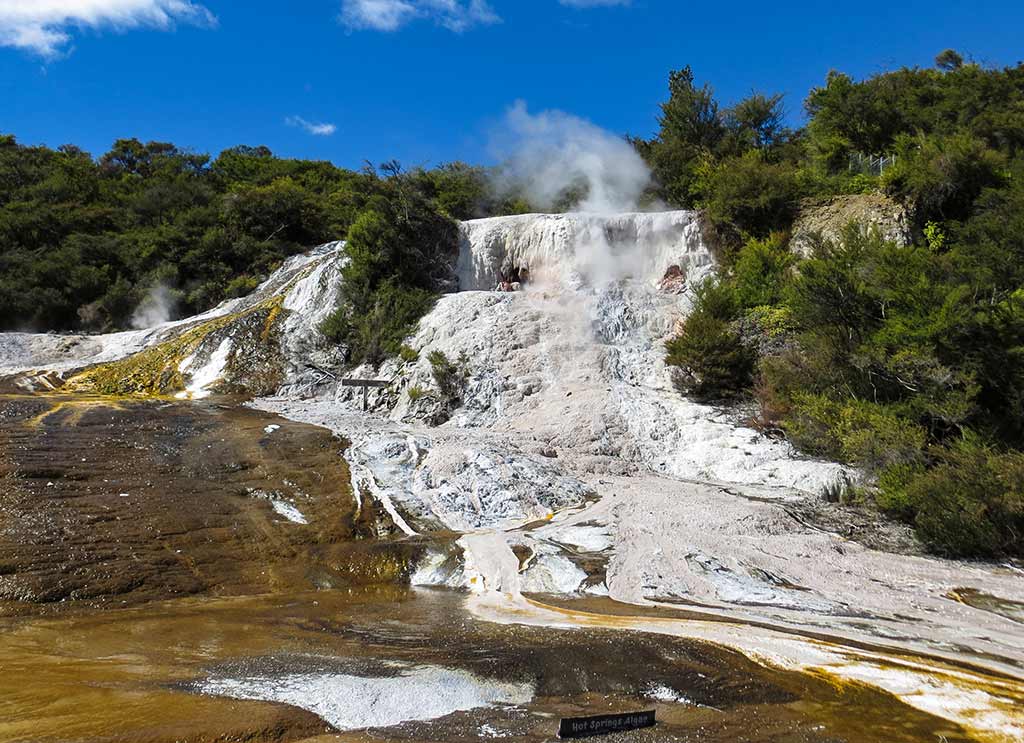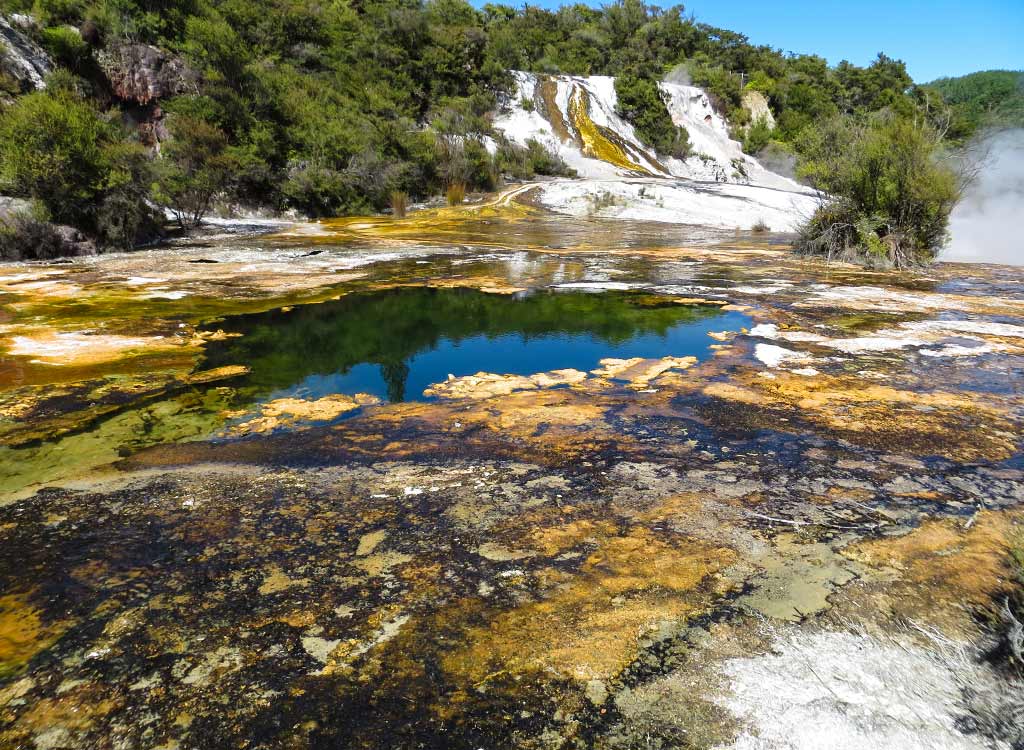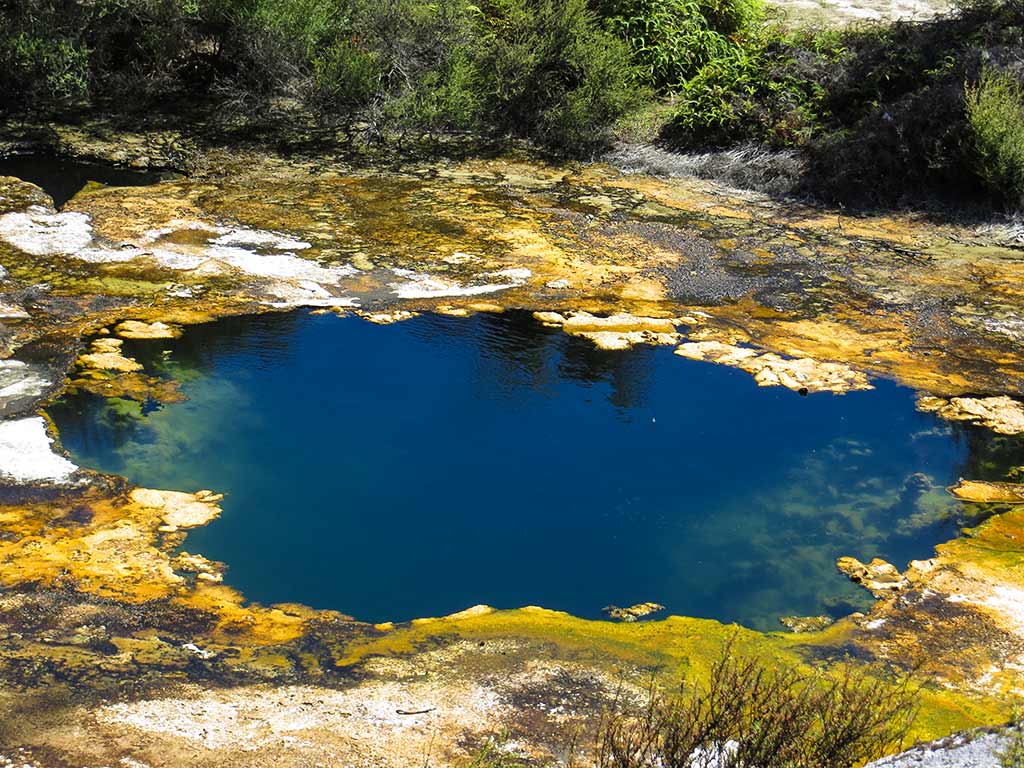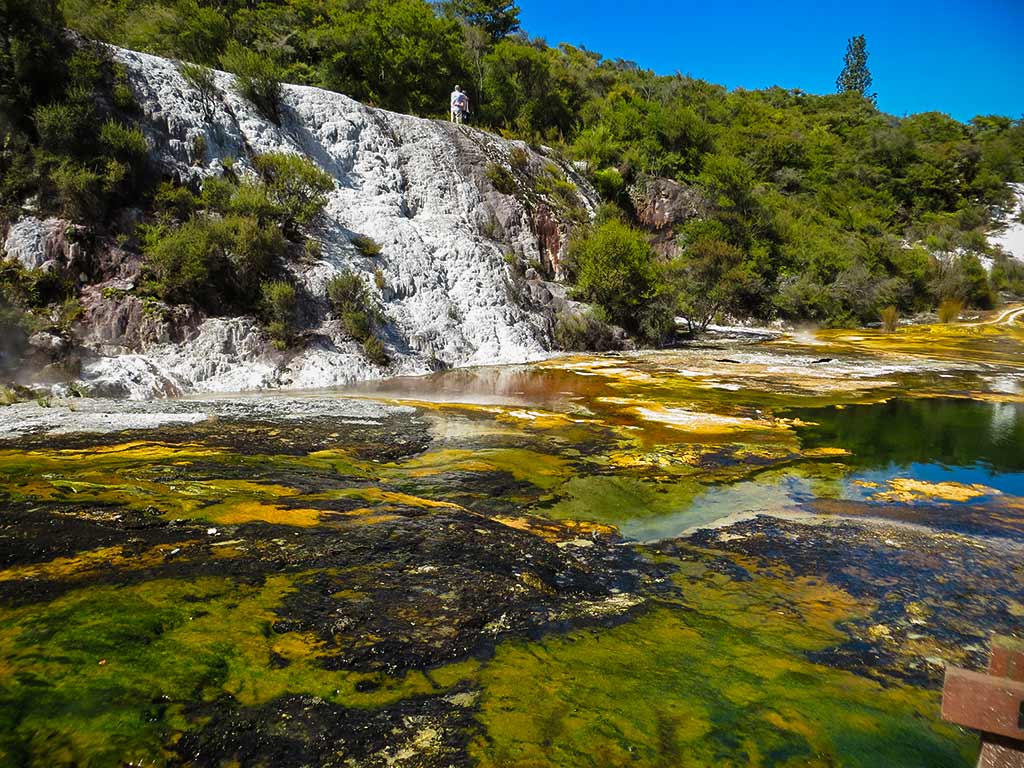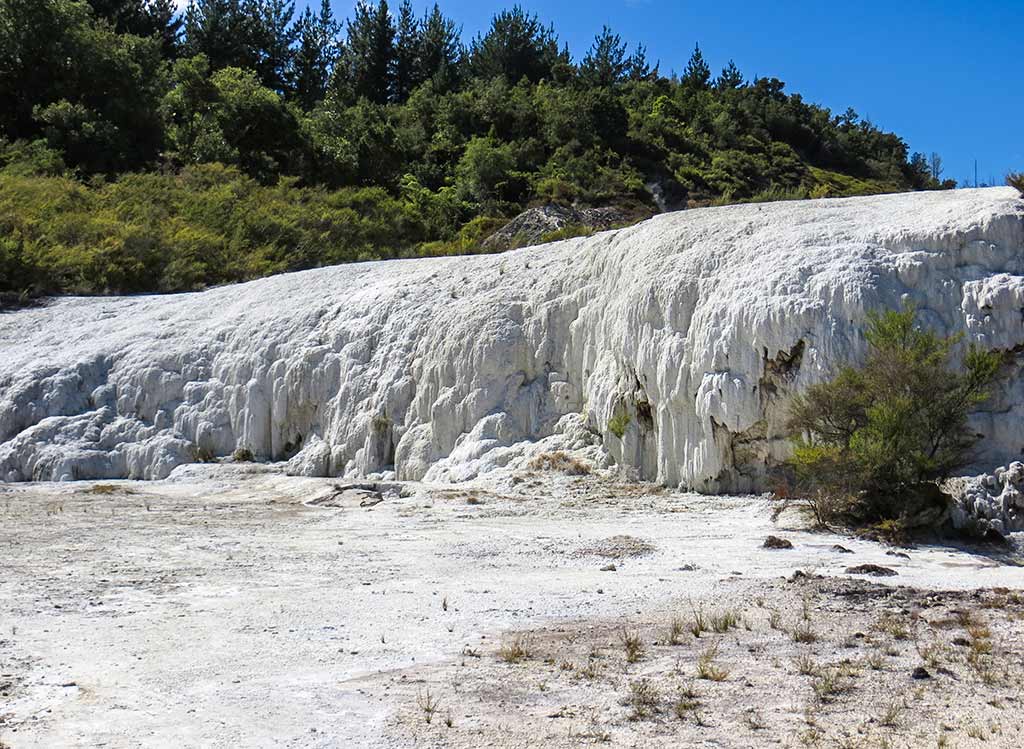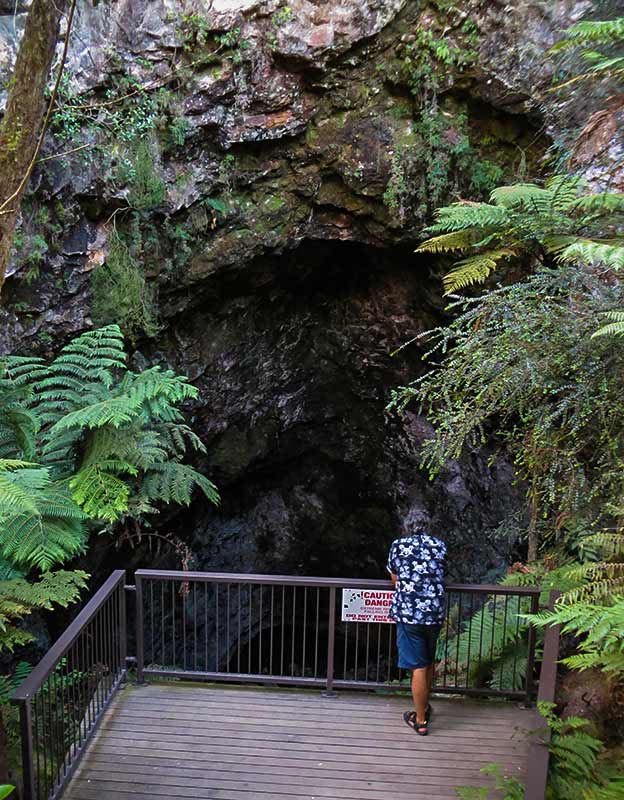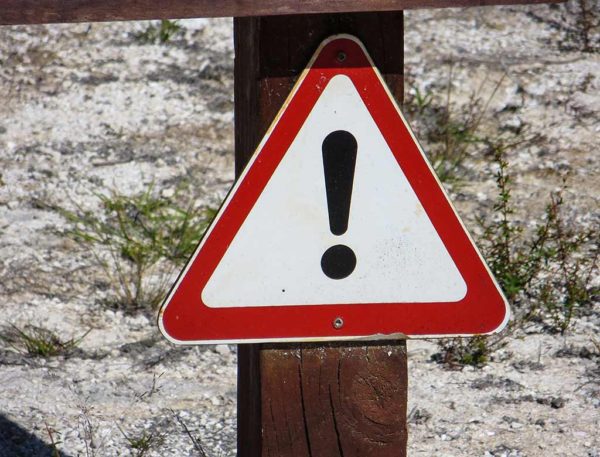March 4, 2014
Road trip time! I love the feeling of heading off in the morning, making our ritual stop at Mc Donald’s for Egg Mc Muffins and coffee drinks, then hitting the road with with our maps and guidebooks. Below, a map of our trip plan so far…
Soon we were winding up and over the Kaimai mountain range that separates the New Zealand’s coastal regions from its large central valley, the Waikato. At times during the drive, we’d find ourselves passing through fairylands of floating thistle downs and white butterflies, one of the enchanting perks of a late-summer countryside drive.
Being Legacy’s tour director, I generally unfold the plan to Rich as we go along instead of overwhelming him with the entire itinerary at once. Today’s first stop would be a thermal park, and I was relieved when Rich, still recovering from the “soap-powder geyser,” was amenable to the idea. We’d been to two thermal parks in New Zealand so far, each a steamy, sulfery, fascinating look at nature balancing the Earth’s inner temperatures.
Today’s park, Orakei Korako, was the most active of the thermal parks, full of boiling and sputtering geysers, pools and mud pits. Here, silica terraces are actively building up while the landscape constantly changes. The park’s key feature is the rainbow array of colors created by the algae and microbes that thrive there. Geothermal parks often appear as a moonscape, but this one, with all its colors, looked more like Jupiter.
This park is sometimes considered part of the Rotorua array but is actually 40 miles south of it, closer to Lake Taupo. It lies an an area of native forest and bush, on the banks of the Waikato River, actually a beautiful setting.
As we pulled our car in, I felt compelled to advise Rich not to park in the area of the parking lot that was steaming, not that he needed my advice on that! Already we could see that this area is indeed, uh, very active. Hopefully this activity stays contained, but already it was infiltrating the parking area. Steam was also coming up out of a vent in the lot. Is this really the best place to park one’s car?
We headed to the Visitor Center, beautifully located on the river, boats waiting to ferry people across to the main park. (We’ll forgive them the bad puns on their restroom signs.) We got our tickets then caught the next ferry. Below, photos of the visitor center area (click on any photo to enlarge).
We were dropped off at the start of the trail through the park. Already we could see this was smaller than other parks we’d visited, but it was impressive. Orakei Korako sprawls down a hillside, its terraces large. We spotted a small geyser bubbling up, not nearly as big as these particular ones get, but without soap powder their eruptions are erratic and unpredictable.
We walked up a combination of boardwalks and stairs to viewing areas over the terraced layers of activity, aptly named the Rainbow Terraces because they are so colorful. We then followed the path along the front of an impressive white terrace, 25 feet high and 80 feet long. Aside from its large size, the most striking feature was its crystalized coating which gave it a wedding-cake look. At its base were numerous spitting, steaming vents, and on top of it where some blue pools and more little geysers. It seems nature is steadily building her next work of art, maybe another “Pink and White Terraces” sort of thing. Will humans still be here when it’s finished, I wondered.
Heading further up the hill we came to what turned out to be my favorite feature of the park, the Rupatu Cave. This cave is one of only two in the world that exist in a geothermal field. It’s a vertical cave with a 60-foot drop, at the bottom of which sits a shallow pool of acid water. The park likes to point out that this pool’s chemical composition gives it the ability to clean jewelry. With all the powerful forces in this park, I’m surprised that the potential to “clean jewelry” warrants a special mention.
While this cave’s uniqueness and jewelry-cleaning abilities were interesting, what grabbed by attention was it’s mystical beauty. It looked like a sinkhole framed with overhanging ferns and greenery, the kind of place it would be cool to rappel to the bottom. I wanted to linger awhile just to take it in, but a group of people showed up and broke the spell.
Below, photos from our visit to the park…
We passed more pools as we headed back towards the river. There were more geysers in this park, 23 in all, but some are in off-limits areas, just too dangerous for people to be near. Sometimes it’s possible to see one of them from the visitor’s center, but it goes off erratically. I’m thinking they need an automatic soap powder dispenser!
In all, our walk through the park took us about an hour. I loved it, and Rich seemed entranced by it. There is something special about a geothermal park, maybe because it’s something so powerful and natural, not controlled by humans. A bit like being near the beating heart of the Earth and being reminded that it is a living entity. And there is a hint of risk. While this walk should be perfectly safe if one sticks to the path, these forces in general are deadly. We saw a few signs like this…
I’m not sure what the sign wanted us to do. Just be in a constant state of low level alarm? Or someone didn’t feel like printing “stick to the path” yet again and just put in the exclamation point? I’m not sure.
We took the boat back across the river to the visitor’s center and retrieved our car from the steamy parking lot. Our next stop would be Lake Taupo. –Cyndi

